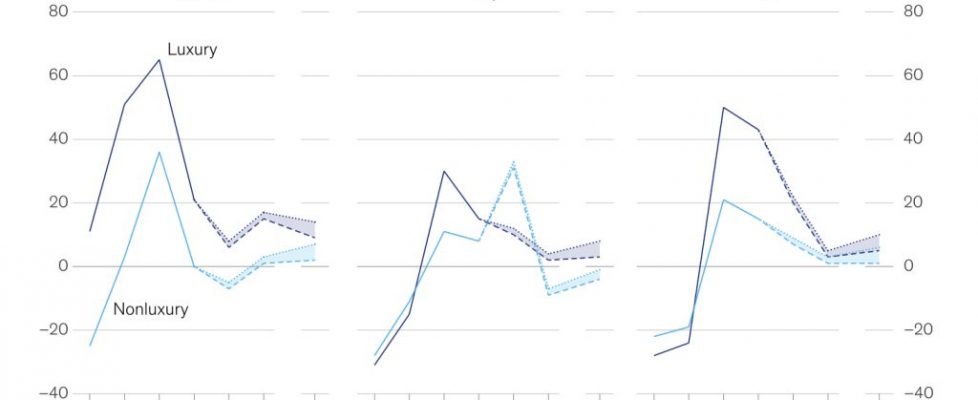PROFIT PILLAR
Profit pillar includes observation of a company’s efficient and responsible use of resources in order to generate revenue. Fashion brands might target to improve their operating processes to achieve sustainability and stay profitable, as the industry is competitive and demands unique approaches. Revenue in the fashion market is projected to reach £36.10bn in 2023 and is expected to show an annual growth rate of 5.40%, resulting in market volume of £44.56bn by 2027, according to Statista Market Insights (2023).
Various fashion sectors in key markets such as China, Europe and the US show different result regarding growth in 2023, however, the luxury sector had the most positive results e.g., in the United States it is expected to grow between 5-10% in 2023 and in China between 9-14%. Whereas luxury sector in Europe, due to being under high pressure from currency rates and a growing energy crisis, is projected to grow between 3-8%.
It is necessary to pay attention to macroeconomic and political issues in the areas where the brand is operating, as well as to develop risk management strategies for conflicts and government regulations to keep the brand image. Moreover, there are significant shifts in consumers’ shopping behavior only meaning that the demand will be weakened or unpredictable in the year ahead for the fashion industry (McKinsey, 2022). Brands will have to focus on developing their marketing to attract customers through differentiated content like social media use for promotion. For instance, Uniqlo’s shoulder bag went viral on TikTok and had over 59 million views which lead to the item being sold out multiple times across multiple colour ways (The Lyst Index, 2023).
The ability to combine creativity in fashion and the commercial value of brand’s products is the key responsibility of creative directors. There are two essential parts: the brand visionary, which includes the need to have artistic vision and design collections, and being the brand ambassador, meaning that the collections have to impress the public and be suitable for the catwalk presentations. Luxury sector especially requires this role due to the vision of the creative director being needed in advertising and press materials (Mitterfellner, O, 2023). There are many examples of commercial creativity in fashion industry : Dolce & Gabbana in 2012 heavily used style colours and patterns that were characteristics of the Baroque era, the obvious similarities between Christian Dior style and Impressionism (Fashion Capital, 2023) or the collaborations between Burberry and various British music bands.
Fashion’s Hottest Brands and Products Q1 (2023) The Lyst Index.
The State of Fashion 2023: Holding onto growth as global clouds gather (2022) McKinsey & Company.
Mitterfellner, O.(2023) Luxury Fashion Brand Management: Unifying Fashion with Sustainability. Taylor & Francis Group.
How Art Has Inspired Fashion Throughout History (2023) Fashion Capital.

25th April 2025 @ 2:42 pm
Nice